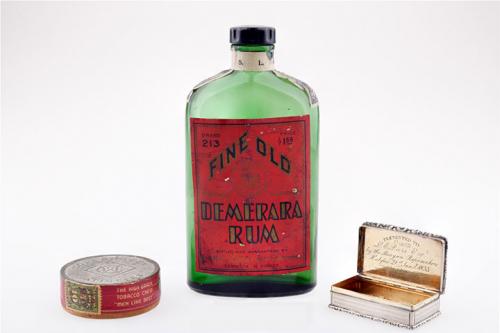
What Do We Do with All This Stuff?
It’s a lot more fun to buy things than to figure out what to do with them after they break, get used up, or simply lose their lustre. Waste has become a huge problem in our world.
Nova Scotians have been practising the three Rs — Reduce, Reuse, Recycle — for decades. And it’s working. In 2016, the Conference Board of Canada gave Nova Scotia an “A” for our low level of waste generation. We are trying to do better – many people and organizations are looking at ways to reduce single-use products like plastic drinking straws.
Still, the proliferation of goods not made to last presents ongoing challenges. Do you buy from eco-friendly companies? Do you ever buy second-hand or repair broken things in your home?

Treasure or Trash — What Do We Preserve?
Our collection reflects some of the consumer practices of Nova Scotians. Not surprisingly, many of these objects were preserved because they were valuable or special – your great-grandmother’s wedding dress is more likely to have survived than her laundry dress. Today our collecting choices are made with a view to which objects are likely to be of historical significance in the future.
Our collection is a valuable resource for policy makers. By looking at plants and animals in our natural history collection, for example, better decisions can be made about habitat and wildlife management. Elsewhere, you can see many examples of products that have come and gone – lead paint, asbestos-filled items, celluloid film – as consumers were alerted to hidden dangers or simply moved on to new things.
Our museum sites, including those featured here, reveal striking differences in the consumer habits of Nova Scotians.
- Ross-Thomson House and Store tells two very different stories about the people who lived and worked on these premises and the needs of the communities they served
- Contrast consumer culture of today with life at Ross Farm Museum, a working family farm that is a model of sustainable living
- At Sherbrooke Village, see how prohibition affected different aspects of community life as you visit the Temperance Hall, the courthouse, the apothecary, and the gardens